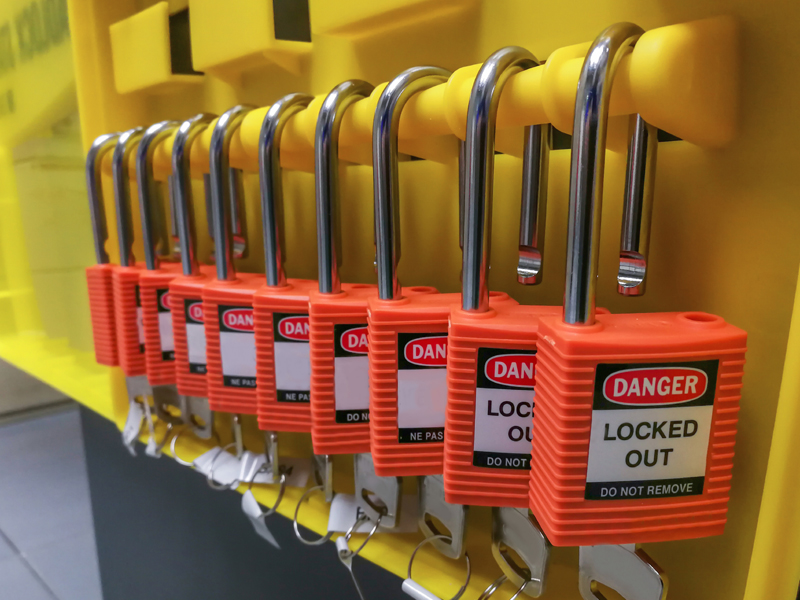
Di-LOG’s Business Development Director, Dave Sweetman, offers electricians a reminder of the vital need to isolate live circuits, and highlights some new products that can help to stay safe on-site.
Every electrician with experience of working on a busy site knows how it feels to take responsibility for themselves and the other tradesmen around them. When you’re dealing with live electricity there’s no room for calculated risks and educated guesses. The only way you can ensure the safety of you and your colleagues is through adopting adequate safe isolation procedures.
For electrical systems where the supply has been cut off to allow dead working, Regulation 13 of the Electricity at work Regulations 1989 applies as follows:
‘Adequate precautions shall be taken to prevent electrical equipment, which has been made dead in order to prevent danger while work is carried out on or near that equipment, from becoming electrically charged during that work if danger may thereby arise.’
This establishes a clear requirement to ensure that conductors and equipment may not be inadvertently energised. In other words, safe isolation.
In practise this means not only cutting off the supply, but also ensuring the method of disconnection is secured in the OFF position and a caution notice or label is posted at the point of disconnection.
Safe Isolation procedures
To ensure installers conform with the latest requirement in BS7671 (18th Edition) – Guidance Note 2, lock off devices and ‘Safe Isolation’ procedures are being enforced across the UK by all monitoring bodies.
Isolation of equipment or circuits using the main switch or distribution board switch disconnector is the preferred method. The method of isolation should be locked off using a unique key, retained by the person carrying out the work, and a caution notice posted at the point of isolation.
Where more than one operative is working on a circuit, a multi-lock hasp can be used to prevent operation of the main isolator until such time as all persons working on the installation have completed their work and removed their padlocks from the hasp.
‘The practice of placing insulating tape over a circuit breaker is NOT an adequate or acceptable means of securing the device in the OFF position.’
Proving dead isolated equipment or circuits
Following isolation of equipment or circuits and before starting work it should be proved that area you are about to work on is in fact dead. The recommended method for doing is by use of a test lamp or a two pole tester (as recommended in HSE GS 38).
The test lamp or voltage detector should be proved to be working on a known live source or a proprietary proving unit. All line, neutral, and protective conductors should be tested to prove they’re dead.
2020: the year of safe isolation
The Di-LOG range of ‘Lockout Kits’ are designed with safety, versatility and affordability in mind. With the entry level DLLOC1 -Personal Lockout Kit, you get a 38mm steel padlock, a universal MCB lock, a standard ‘Pins-out’ MCB Lock and Warning Tag.
The higher the level of kit the more features are included. By adding items such as multiple isolation lockout hasps to the DLLOC2 Domestic kit, you can enable multiple persons to work on the same circuit, with the ability to hold up to six lockout padlocks.
The DLLOC3 – Professional and DLLOC4 – Expert kits provide more scope to safely isolate a broader range of MCBs and main switches. Items such as the larger universal MCB lockout device, large main switch lockout device, and a fully insulated padlock and hasp ensure all commercial and industrial applications are covered.
New Multiple Circuit Lockout
Di-LOG has recently introduced several new products to its Lockout Tagout range, including the DL8115 Flexible Lockout Hasp, which enables you to lockout a multiple of devices with the fully insulated 1.8m wire.
CombiVolt Lockout Kits
Di-LOG is always looking for ideas to encourage the use of safe isolation in the industry, so it has now packaged up its award winning CombiVolt x series 2 pole voltage indicators with the entry level Lockout Kit 1. The DL67xx-LOC1 series of kits are supplied with either the DL6780 LED or DL6790 LED and Digital Voltage Indicators.
Visit a special Di-LOG safe isolation page, containing more product resources and offers here.











